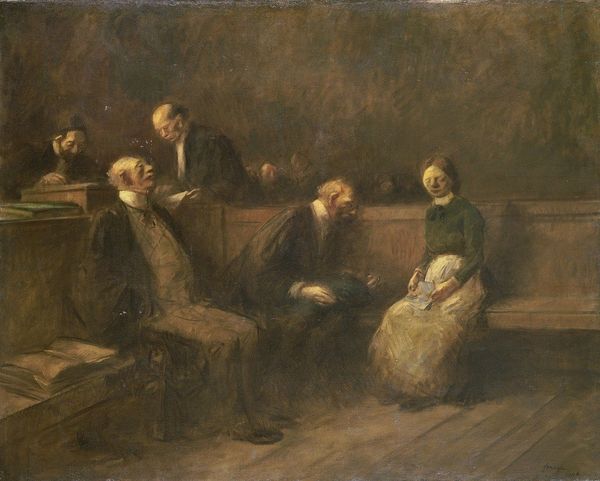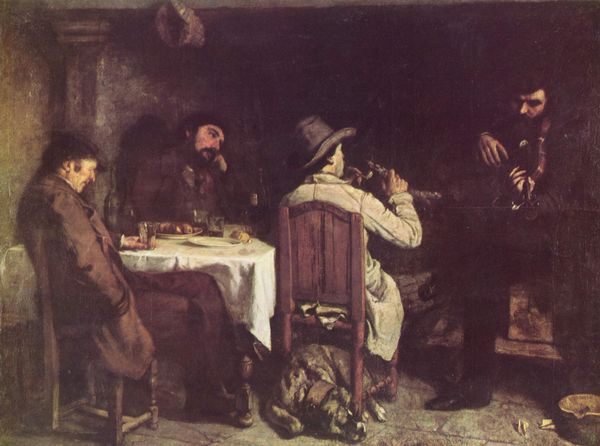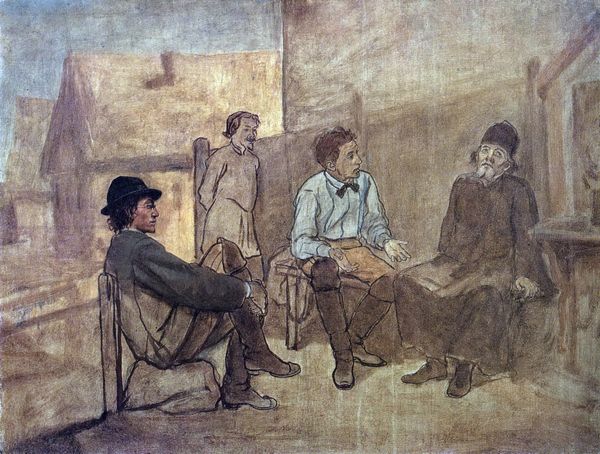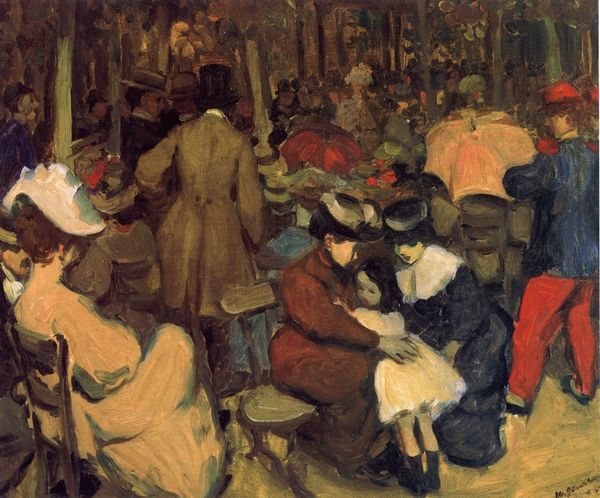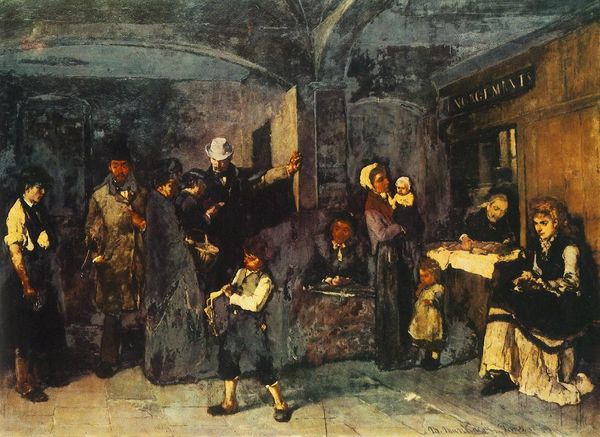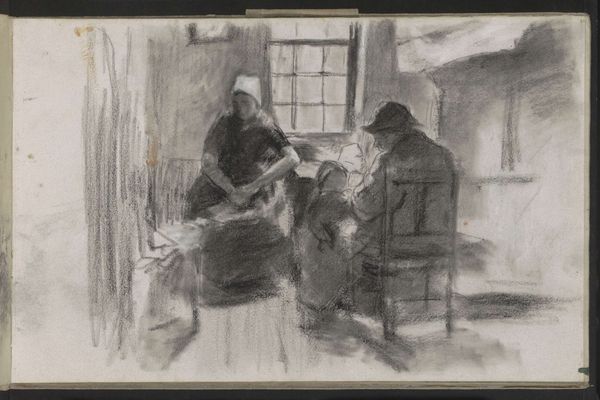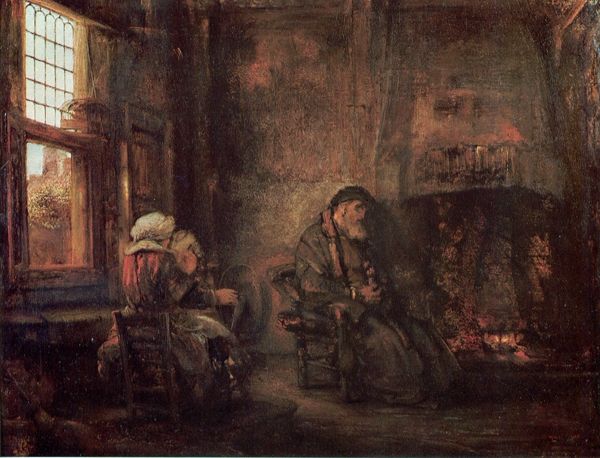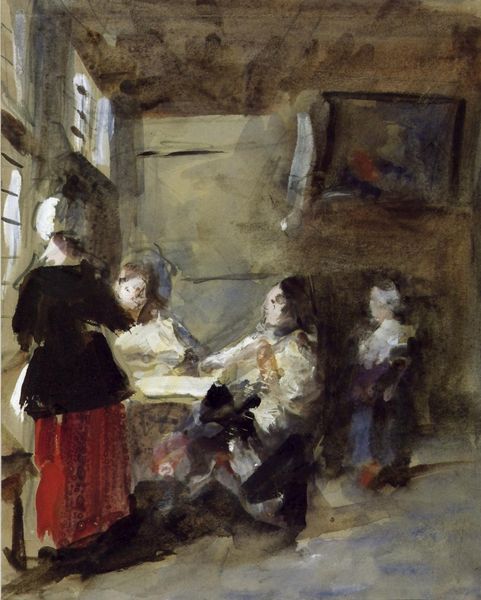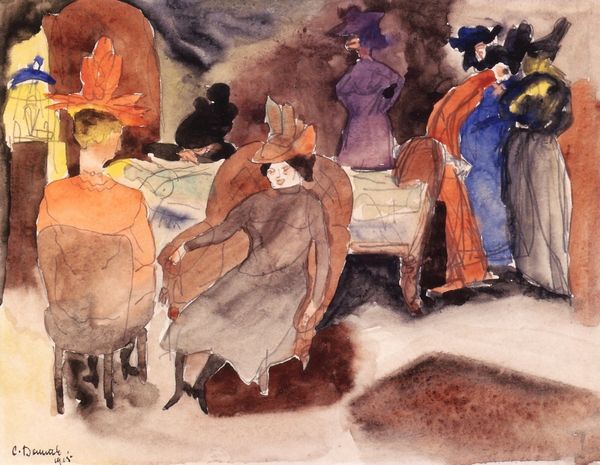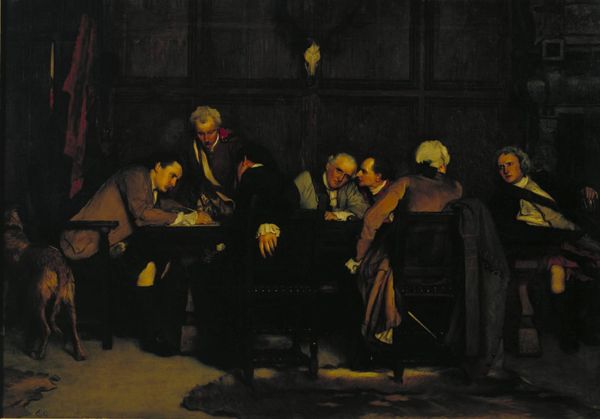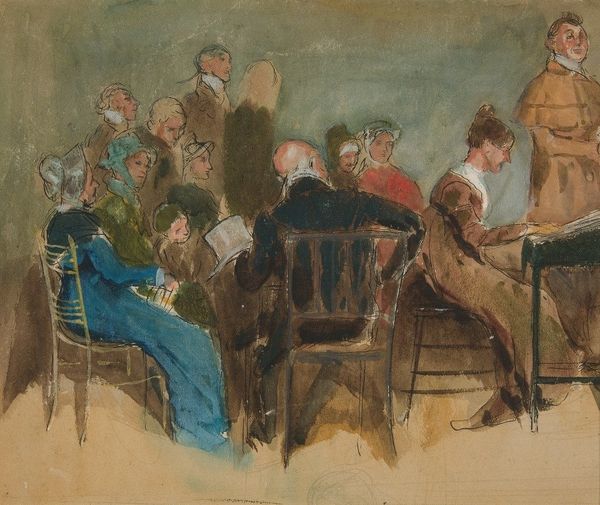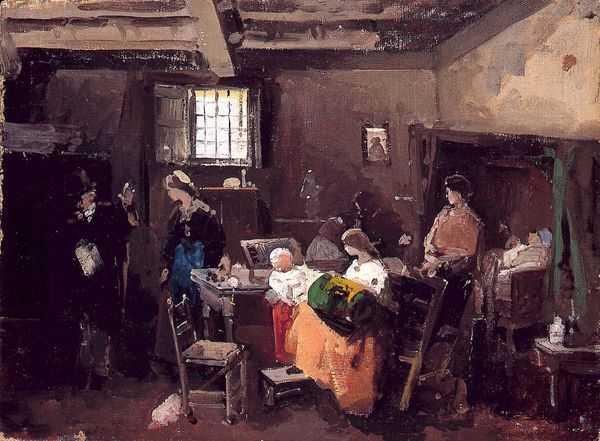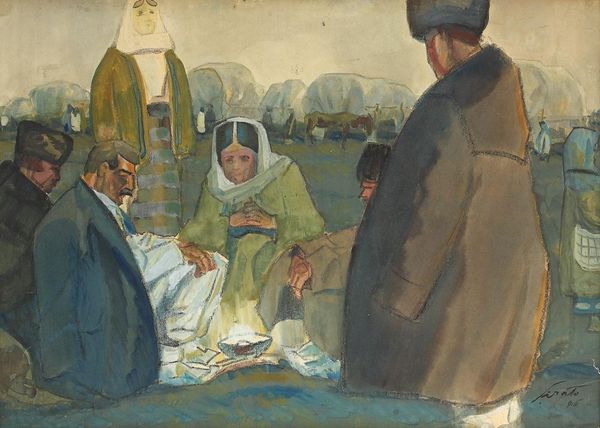
painting, oil-paint
#
portrait
#
dutch-golden-age
#
painting
#
impressionism
#
oil-paint
#
oil painting
#
genre-painting
#
northern-renaissance
#
realism
Copyright: Public domain
Curator: Ah, "Waiting Room" by Vincent van Gogh, painted in 1882. Look at the subdued light, the somber faces… Editor: Yes, there's a palpable tension isn't there? And it's all in the brown, that rich, earthy brown. Makes me think about what Van Gogh used—pigments, surely, but maybe the dirt and clay of the landscape bled right into them too? Curator: Interesting. Van Gogh was, at the time, working in the Netherlands and deeply concerned with the lives of ordinary people. One could say he’s observing the soul, searching for authenticity and, indeed, reality. Editor: "Authenticity" is tied to those choices. He's using oil paint, sure, but compare it to some pristine landscape or regal portraiture. The visible brushstrokes, the muddiness. This isn't slick. The artist is telling a truth, or at least the version available with the materials and the techniques he chose, right? Think about those darks-- Curator: --They nearly swallow the figures, especially those women in their bonnets. Look how their faces are obscured, lost in shadow. Only a patch of daylight through the window really cuts into that gloom. Editor: You're right to focus on the window because the construction says a lot about the socioeconomic status of the people inside, and the room’s use case. It may even tell us whether this painting emerged in a hospital or even in a community center. If we understand better where these people are waiting we might reveal something of how they are produced by the space they inhabit, and Van Gogh as an agent and as an individual produced by the very forces that are producing the scene inside! Curator: The composition does draw your eye upward, from the densely packed figures towards that window. The light, though subdued, offers a hint of… well, something beyond their present circumstances, doesn't it? Editor: The glass might have been cheap at that time, and it likely needed maintenance from local, working class glaziers, further illustrating his relation to laborers in Holland at the time, whether or not he was intending it to be captured in this painting, is simply part of the network! It’s exciting isn't it? Curator: Very exciting indeed! For me, the painting serves as a poignant snapshot, an almost voyeuristic peek at a quiet drama playing out. He's immortalized the mundane anxiety of simply... waiting. Editor: Precisely, we are the "waiters", or even "Van Gogh", we feel its impact more vividly if we analyze its elements. Curator: A thoughtful invitation, don't you think? Editor: I do think. Thank you for expanding that.
Comments
No comments
Be the first to comment and join the conversation on the ultimate creative platform.
